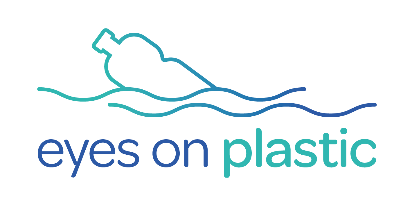
Objectives of the service
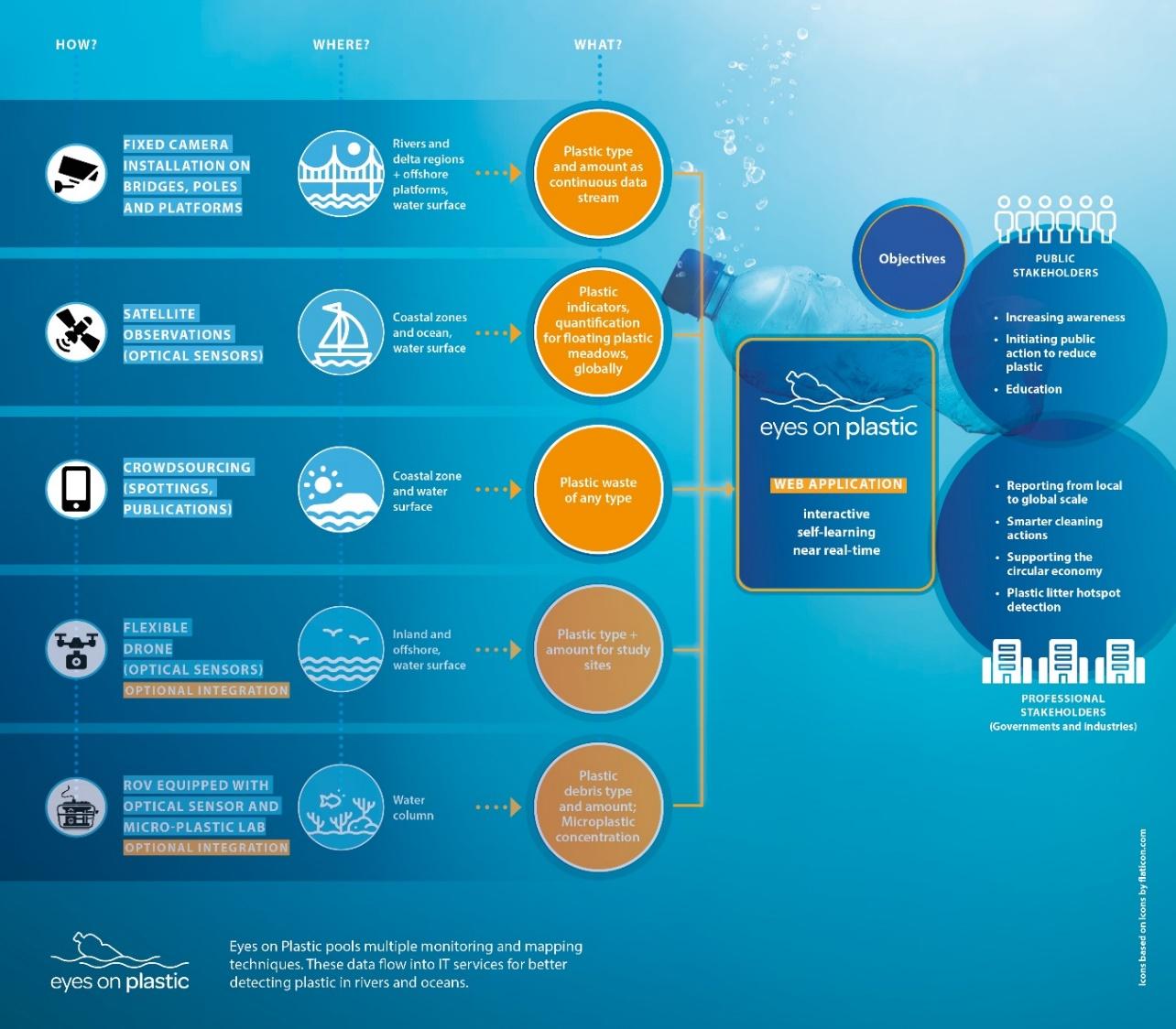
Eyes on Plastic demonstrates a multi-sensor service solution to detect and track aquatic plastic litter from local to global scale throughout the water column. However, creating data does not make a sustainable business model. Therefore, a full service is designed around it. The thorough requirements analysis is followed by the establishment of operational analytics, interfaces and cloud-based databases and end up in an online web application. This allows the users, third parties or even the broader public to access, visualize and analyse all data which are being measured by the different techniques, in real-time. Beyond that, the online service invites everybody to actively engage in finding and tracking plastic litter spreading local information even quicker and making it accessible on a global scale.
Users and their needs
The Eyes on Plastic solution is demonstrated to following key users: Lactec (Guanabara Bay, Brazil), One Earth One Ocean (Jakarta, Indonesia and Manila Bay, The Philippines), and ENEL/Municipality of Genoa (Genoa, Italy). Furthermore, EOMAP is operating its own test site near Jakarta.
Several key challenges and needs are mentioned by all users:
-
Effective and continuous mapping and monitoring of plastic hot spots
-
Globally applicable solution that provides detailed information
-
Focus on rivers as they play a major role for the input of marine litter
-
Quantitative measures that can be compared over time and across sensors
-
Standardised reporting output to support international monitoring obligations and procedures resulting in a monitoring system
Service/ system concept
Eyes on Plastic combines space assets, on-site sensors and platforms, as well as novel IT, algorithms and crowed sourcing to make the difference in understanding and quantifying aquatic plastic litter. The user interface is a web application that accommodates all service components for each monitoring site and the crowd sourcing capabilities in addition.
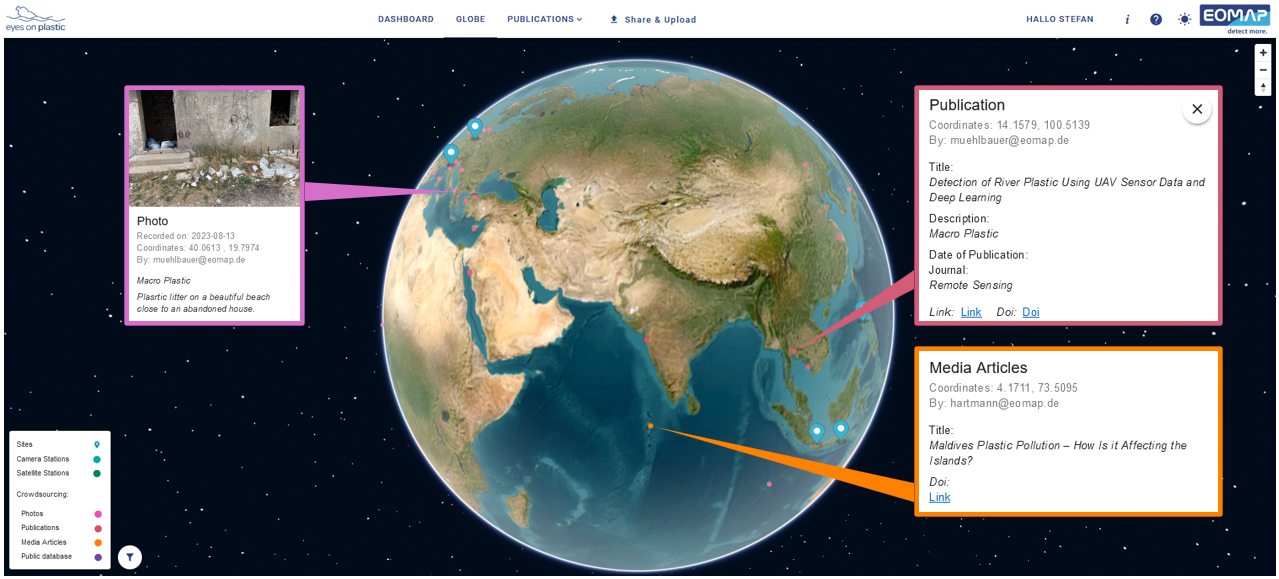
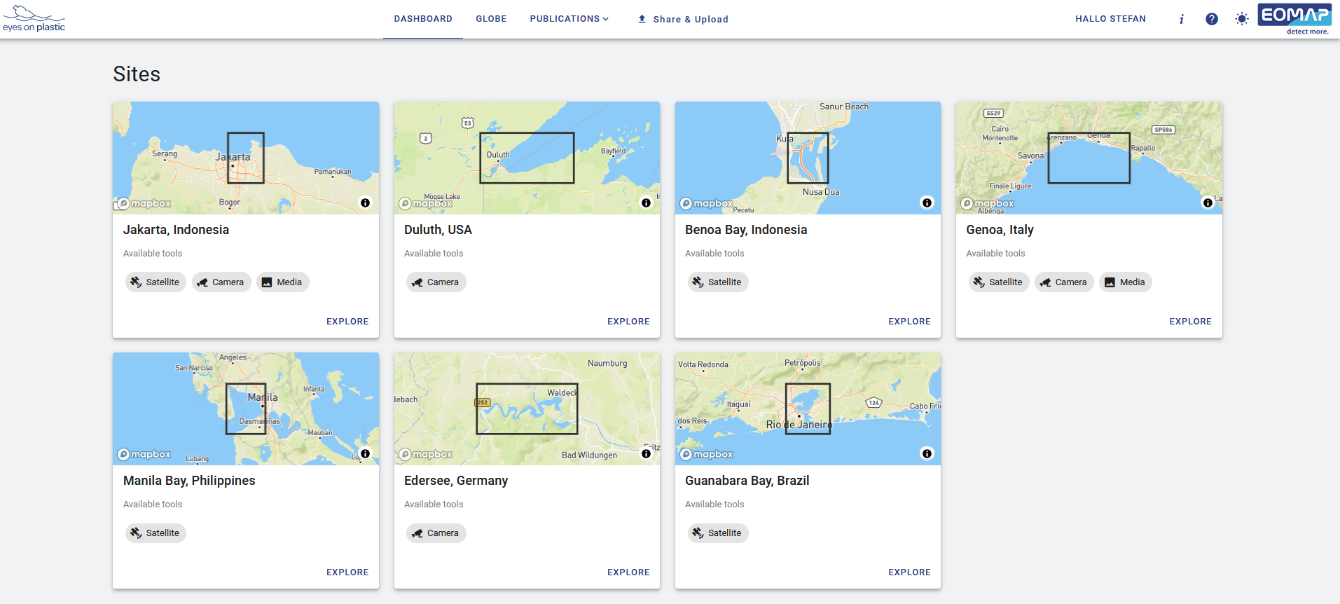
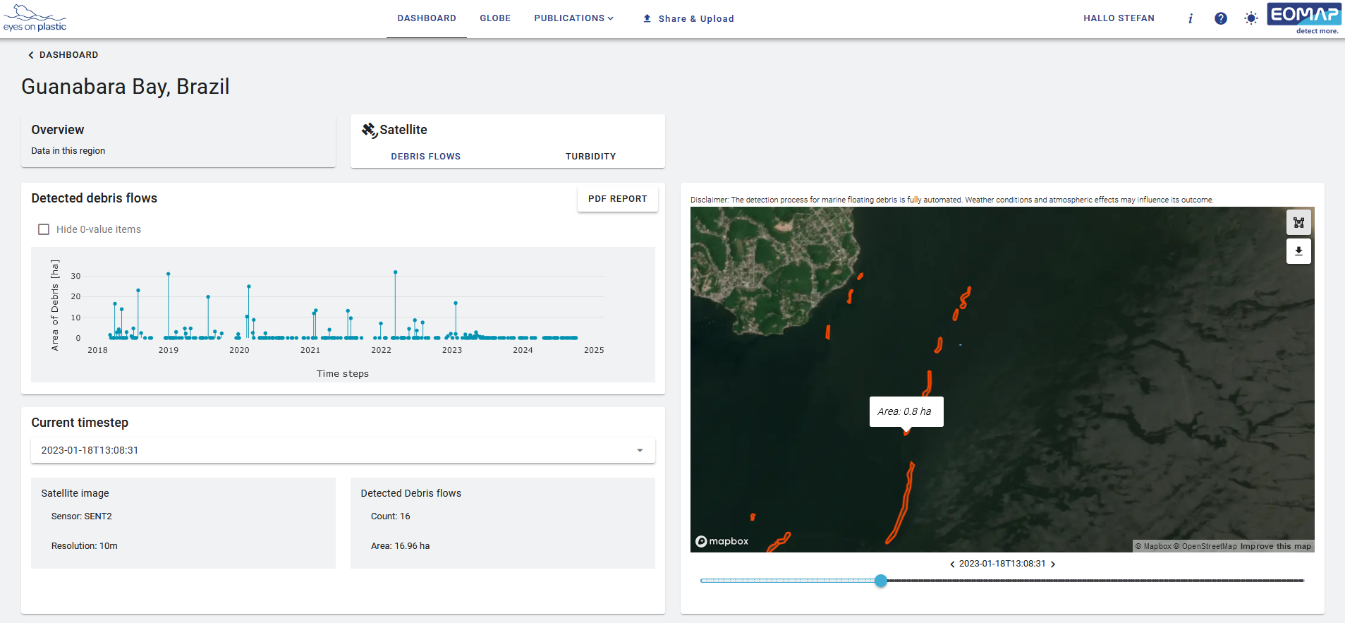
Space Added Value
By flying high with satellites, drones (optional), installed camera systems, and diving deep with Remotely Operated Underwater Vehicles (optional) equipped with an optical sensor and microplastic lab, plastic litter can be monitored at all angles and scales. The option of uploading images, relevant articles and reports complements the multi-sensor approach integrating the human sensing capabilities for contributing to a cleaner environment.
The following space assets will be demonstrated:
-
SatEO data, including optical satellite data at high and very high spatial and temporal resolution such as Sentinel-2, will be used for coastal zone monitoring
-
SatCom is used to receive the camera data mounted on poles to observe rivers or coastlines
-
Satellite-based water quality information (turbidity) is analysed to find parallels to floating debris
-
SatNav for navigation of drones and the underwater ROV (managed by Fraunhofer IGD) carrying the micro-plastic lab and optical sensor are optional
Current Status
The Eyes on Plastic Demonstration Project was successfully concluded by February 2025. As a key player in the aquatic EO domain, EOMAP has brought the motivation, business acumen, and expertise to elevate plastic monitoring, offering an online solution at TRL 7+. The solution reduces the time to find the best location for future plastic litter monitoring and consequently increases the performance of local operations by obtaining image footage on the status of the activity. Eyes on Plastic provides historical and baseline standardised data on aquatic plastic litter and water quality through turbidity that may be used to provide label cards for ecosystem health and use the information for monitoring and reporting obligations related to plastic litter. Initial inquiries and engagement with industrial customers proof interest in the service. Ongoing developments in legal frameworks make the service a promising solution for tracking and monitoring aquatic floating plastic litter to fulfil reporting requirements for governmental clients in future. We will continue to research, promote, and market our solution. Let’s keep our eyes on plastic!



